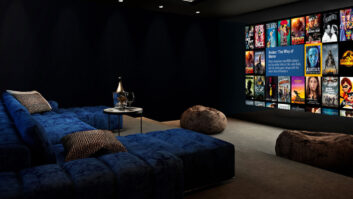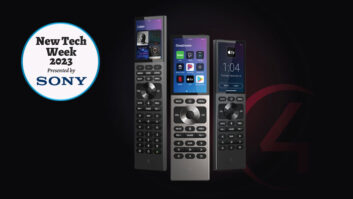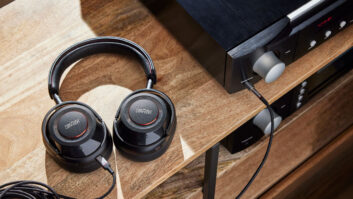Residential Cat-5 distribution systems have to be reliable and provide great sound, but they cant stop there. Bob Williams, ATONs general manager, looks at it this way: They have to be replicable and preserve dealer margins, he said.

Repeatability and install ease were major goals when the Linear Home Technology Group collectively created DIGI-5, the new plug-and-play distributed audio standard, Williams said. A competitor to the A-BUS Cat-5 standard, DIGI-5 was announced last year at CEDIA EXPO, and products utilizing its infrastructure are finally shipping globally.
ATONan ELAN sister brand known for affordable speakers and AV distribution systemsis enthusiastic about the roll out. ELAN Home Systems was a champion of structured wiring in the late 1990s and since then has seen several new lines and more than 70-percent growth in sales. Digital distribution just may be the next phase of structured wiring.
A-BUS Comparison
Among the new ATON products to leverage DIGI-5 technology are the DH44/DH46X digital audio routers and accompanying DHTP1 amplified touchpads.
So how is DIGI-5 different from A-BUS? The topology is the same, Williams explained. We all use Cat-5 wiring, but the difference is that we are digital. We convert each signal to digital and we move up to the 21st Century.
He added that there is zero signal degradation and it is a cleaner, all digital sound with much better power, even great distances from the hub. Direct Digital Amplification (DDX) splits the amplifiers functions between the master hub and each of the systems zones for maximum output and efficiency, and a distortion-free sound.
Digital Advantages
Robert Holland, DIGI-5 technology program manager, believes that going digital brings a lot of advantages to the table. This is end-to-end digital for improved performance, he said, with no loss in terms of transmission. Its a cleaner signal with higher power output that clients want30 watts per channel from the keypad.

Each zones DDX power device sits in a small touchpad. While delivering 30 watts RMS per channel at eight ohms to the speakers in that zone, the digital design keeps the pad cool, eliminating the need for in-wall ventilation.
And the price point? Williams says the DIGI-5 pricing will set a new standard, too. The new hub is $799 MSRP, and ATON is merchandising a complete hub for amplified keypads that at 200 feet out is still powerful. Splitting amplifier functions in concert with a system-wide digital signal contributes to a cleaner sound on par with higher wattage Class A amps, he added.
From the standpoint of wiring the house it is significantly easier and less expensive, Holland agreed. Using a single run of Cat-5 cable per zone, the DIGI-5 architecture delivers the power, audio signal, and two-way control information all in one. Because about 95 to 98 percent of all DH44 wiring is Cat-5 versus the more expensive 16/4 speaker wire, the most laborious part of a typical installation is halved, while the cost savings on the wire itself are significant.
The cost-effective nature and simplicity of the system will help it catch traction quickly, according to Williams. The single Cat-5 pass keeps everything moving in a solution ATON installers can easily replicate, he said. Once you are out in the field and complete one there is not a lot of magic for doing it again. There is no PC involved and no complex programming.
Market Goals
What ATON is striving to do, according to Williams, is to create an open market type of innovation, with enhanced accessibility to the product. We have talked about ATON being more open distribution; we are not a restricted territory type of line, he explained.

Williams hopes that professionals migrating into the CEDIA space from vertical markets, such 12-volt/electrical and the alarm industry, will look to DIGI-5; the open distribution model allows ATON to put products where installers are currently shopping. It is also a system that is well suited for new housing or retrofits.
Holland thinks that DIGI-5 products will help overall growth in the residential systems market. This is an opportunity to expand the market for distributed audio in terms of the cost issues, he said. For a comparable product this is a lower price point.
As more companies leverage this all-digital-all-the-time technology, the distributed audio experience can reach new customers with no compromise in quality. Xantech will soon be showing Digi5-based products, and plans are also in the works for a new Linear structured wire system in 2009.
Margot Douaihy is a contributing editor of Residential Systems magazine in New York City.







